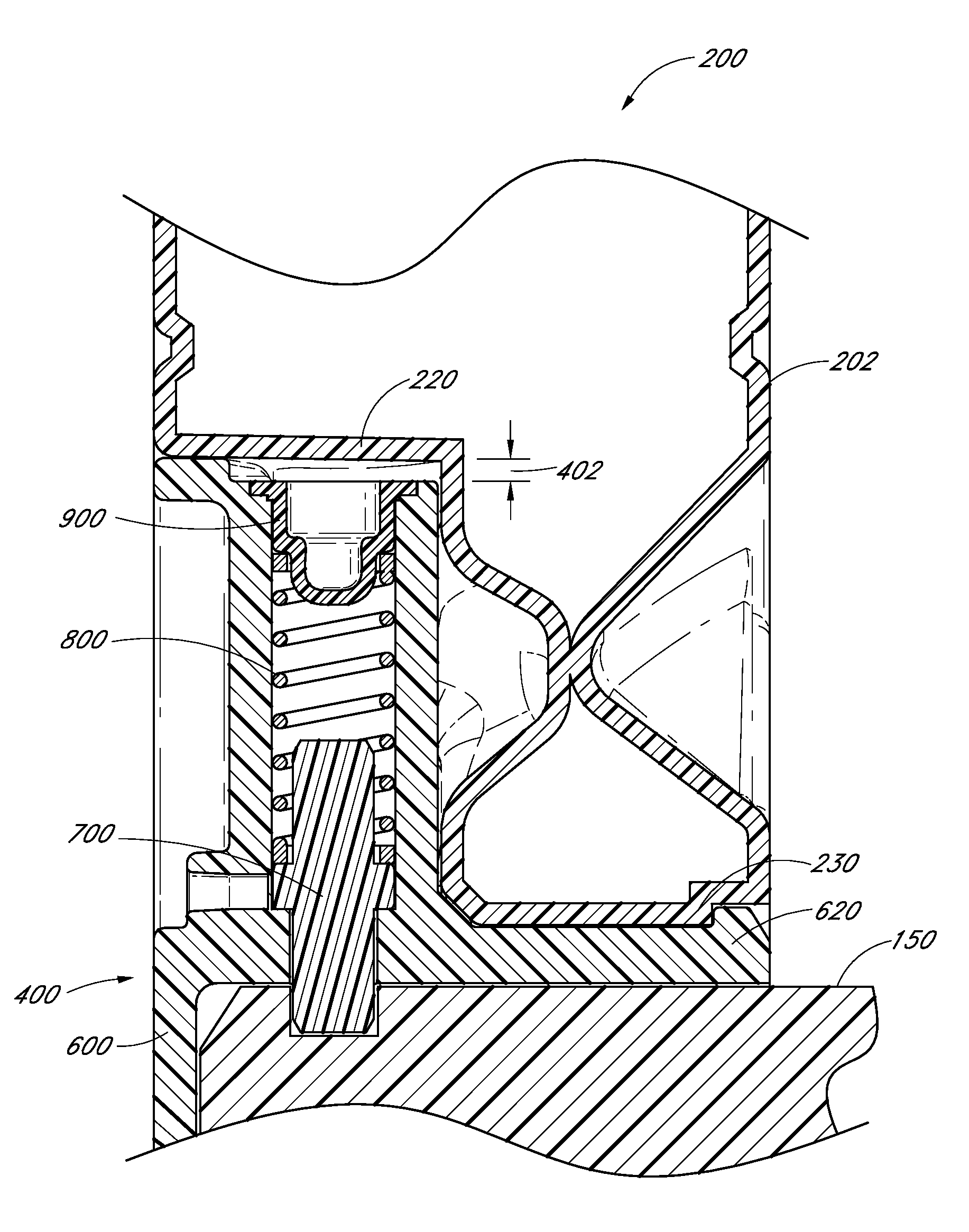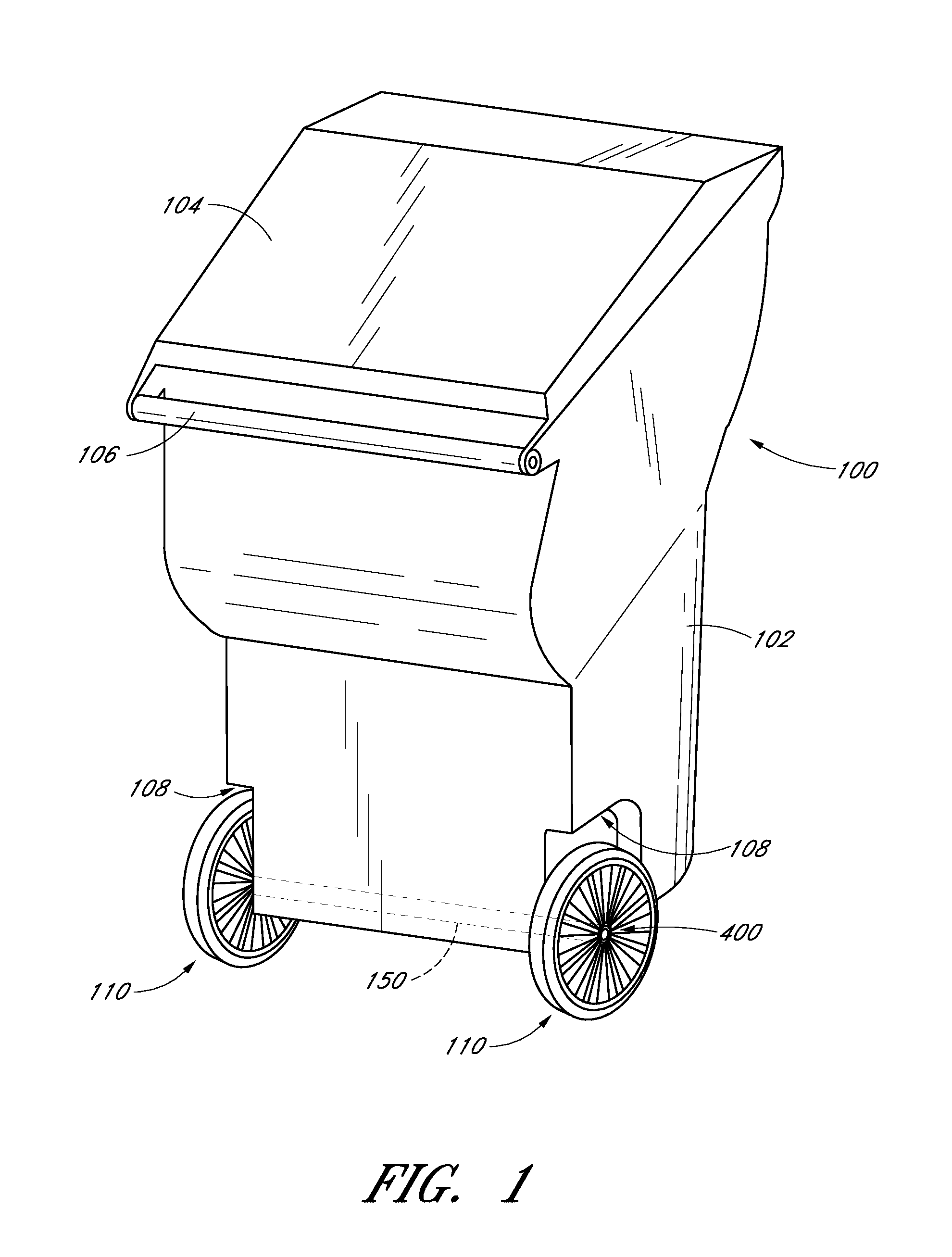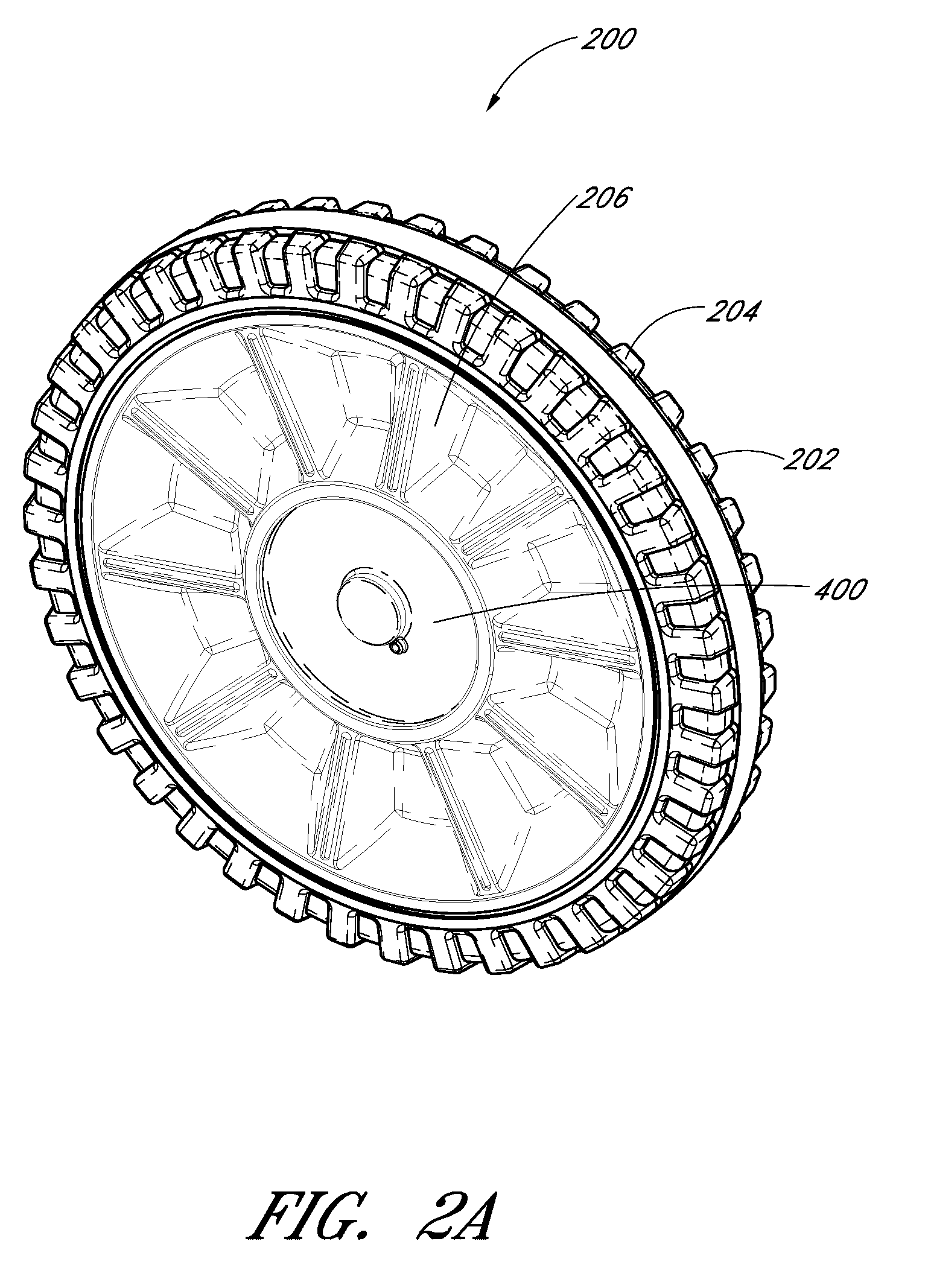Wheel and hub assembly
a technology of hubs and wheels, applied in the direction of hubs, transportation and packaging, refuse gathering, etc., can solve the problems of inability to replace or repair wheels or carts, damage to axles, unduly complex snap-on wheel assemblies, etc., and achieve the effect of slowing assembly and increasing costs
- Summary
- Abstract
- Description
- Claims
- Application Information
AI Technical Summary
Benefits of technology
Problems solved by technology
Method used
Image
Examples
Embodiment Construction
[0040]Although certain preferred embodiments and examples are disclosed below, it will be understood by those in the art that the invention extends beyond the specifically disclosed embodiments and / or uses of the invention and obvious modifications and equivalents thereof. Thus, it is intended that the scope of the invention herein disclosed should not be limited by the particular disclosed embodiments described below.
[0041]The wheel assemblies described herein can be used in connection with numerous wheeled devices. FIG. 1 illustrates an example embodiment of a refuse cart comprising plurality of wheel assemblies 110 mounted on an axle 150 to the lower end of the cart body 102. A hinged lid 104 optionally can be provided, and the cart 100 can be tilted or tipped about the wheel assemblies 200 using handle 106 so as to enable rolling of the cart 100 for the transport of refuse, for example between a location for filling the cart 100 and a location for pickup by a refuse disposal com...
PUM
| Property | Measurement | Unit |
|---|---|---|
| thick | aaaaa | aaaaa |
| time | aaaaa | aaaaa |
| rotation | aaaaa | aaaaa |
Abstract
Description
Claims
Application Information
 Login to View More
Login to View More - R&D
- Intellectual Property
- Life Sciences
- Materials
- Tech Scout
- Unparalleled Data Quality
- Higher Quality Content
- 60% Fewer Hallucinations
Browse by: Latest US Patents, China's latest patents, Technical Efficacy Thesaurus, Application Domain, Technology Topic, Popular Technical Reports.
© 2025 PatSnap. All rights reserved.Legal|Privacy policy|Modern Slavery Act Transparency Statement|Sitemap|About US| Contact US: help@patsnap.com



